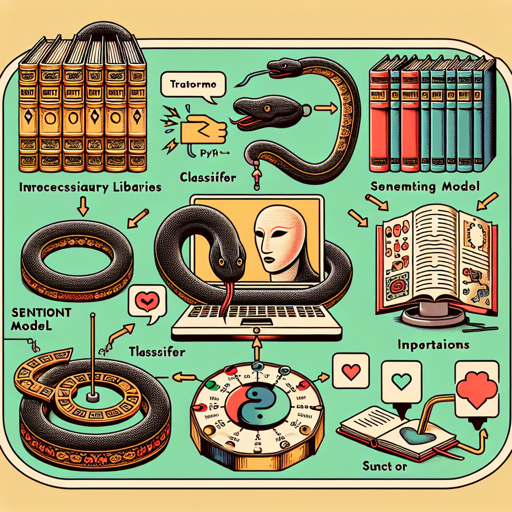Sentiment analysis is a powerful tool that allows you to determine the emotional tone behind a body of text. With the help of the popular library Transformers, sentiment analysis can be easy and efficient. In this blog, we’ll walk you through the steps to set up a sentiment analysis classification pipeline using the Korean sentiment model.
Step-by-Step Guide to Using Transformers for Sentiment Analysis
Let’s break down the process into manageable steps for easier understanding.
- Import Necessary Libraries: You’ll need to use the Transformers library. Make sure you have it installed in your Python environment.
- Set Up the Classifier: Create a text classification pipeline using a pre-trained model that specializes in Korean sentiment analysis.
- Custom Tweet Input: Input the text you want to analyze. In our case, it’s a simple Korean statement.
- Classify the Text: Use the classifier on your input text to get predictions.
- Extract Sentiment Score: Analyze the prediction scores to determine if the sentiment is positive or negative.
Understanding the Code
The code segment below encapsulates the steps we’ve outlined:
from transformers import pipeline
classifier = pipeline("text-classification", model="matthewburke/korean_sentiment")
custom_tweet = "영화 재밌다."
preds = classifier(custom_tweet, return_all_scores=True)
is_positive = preds[0][1]["score"] > 0.5
To make it relatable, let’s use an analogy: imagine you’re a chef who has a special recipe book. Each recipe represents a unique model that specializes in different cuisines. Here, the chicken noodle soup recipe would be the matthewburke/korean_sentiment model. You (the classifier) carefully select the right recipe based on the ingredients (text) you have on hand.
1. Importing the Library
When you import pipeline, you’re effectively opening your recipe book to start cooking. This is a crucial first step.
2. Setting Up the Classifier
By defining the classifier with pipeline("text-classification", model="matthewburke/korean_sentiment"), you’re picking the specific recipe you want to follow, ensuring that the model is tailored for Korean text.
3. Custom Tweet Input
The line custom_tweet = "영화 재밌다." represents your chosen dish; you’re preparing the ingredients before you start cooking.
4. Classifying the Text
By running preds = classifier(custom_tweet, return_all_scores=True), you’re throwing your ingredients into the pot to simmer and allow the dish to develop flavor.
5. Extracting Sentiment Score
Finally, extracting is_positive = preds[0][1]["score"] > 0.5 is like tasting your dish to see if it turned out well – if the score is above 0.5, you know you have a deliciously positive sentiment!
Troubleshooting Common Issues
As you embark on your sentiment analysis adventure, you may encounter some bumps along the way. Here are troubleshooting tips to help you navigate them:
- Model Not Found: Ensure you have spelled the model name correctly and that it’s available on Hugging Face Hub.
- Import Error: Check that you have the latest version of the Transformers library installed.
- Input Error: Double-check that your input text is encoded correctly. Problems may arise if the text contains unsupported characters.
For more insights, updates, or to collaborate on AI development projects, stay connected with fxis.ai.
Conclusion
By following this guide, you’ve successfully set up a sentiment analysis pipeline tailored for Korean text using Transformer’s powerful capabilities. At fxis.ai, we believe that such advancements are crucial for the future of AI, as they enable more comprehensive and effective solutions. Our team is continually exploring new methodologies to push the envelope in artificial intelligence, ensuring that our clients benefit from the latest technological innovations.

